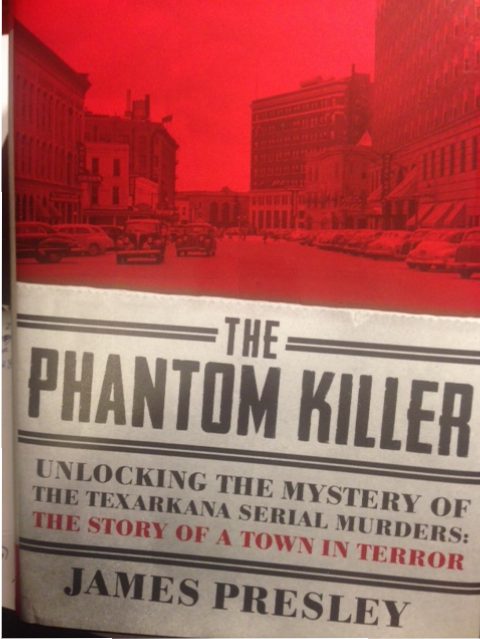The Phantom Killer:
Unlocking the Mystery of the Texarkana Serial Murders:
The Story of a Town in Terror
by James Presley
Pegasus Crime, 2014, HC 1st Edition
Notes, Bibliography, 8pp bw photo insert
A Review by Gene Stewart
James Presley, Pulitzer Prize-nominated historian, grew up with a personal link to the events covered in this book; his uncle was sheriff in the county where most of the murders took place. He also got to know the investigators, reporters, and many principal witnesses in the case while a teenager, when he was police reporter for the Texarkana Gazette. His Ph.D in history taught him perspective, and it shows throughout this detailed, careful, and well-presented account.
It is of note that a set of slasher-style horror movies have been made using these murders as an excuse. Virtually nothing in the films holds true to life. As Presley makes clear, details blur, memory is replaced by confabulation, and eventually history becomes as much myth as memory. He seeks to set the record straight and to nail down the facts, down to weather on key days, the exact whereabouts of witnesses, and the relative merits of conflicting theories of the crimes.
In the movie, a young girl is tied to a tree and stabbed by a knife affixed to her trombone slide. In real life, she was a talented high school girl who played saxophone in a professional band. Her saxophone was missing when her body was found, and later proved to be an important clue to revealing the murderer, who was, in real life, never tried for the murders due to layers of legal and other considerations arising from jurisdiction and practical concerns.
Texarkana perches on the border between Texas and Arkansas. It has the only courthouse in the country to straddle state borders. Distinct police departments mostly cooperated, but inevitably legal tangles developed.
In this book we hear of depraved relationships, the outright murder of innocents, and the creepy stalking of victims. It is no wonder horror movies grew from such material. Aside from the young musician who never made it home from a gig, we see a farmer shot through a window as he read his evening newspaper. His wife, as she went for the phone, their house being one of the few in the area to have a hook-up at that time, 1949, was shot in her face but not only survived, she got back up and ran out of the house, bleeding profusely. Even more horribly, she ran first to an empty house, then a mile or more farther to family.
Couples parked on a lovers lane were victims, too, the men forced to remove their pants, the women taken into woods to be raped and killed. One teenaged boy, having been shot, managed to crawl a few dozen yards before the killer came back from raping and murdering his girlfriend. The killer killed him as he crawled.
The psychopath doing this had a penchant for stealing cars, too. He’d steal them causally and drive them for hundreds of miles between towns. While one might not characterize him as a spree killer, he was certainly living a life of psychotic abandon, doing what he wanted when, usually with violence. When he needed money he robbed or mugged people. He’d park his girlfriend, who became his wife so she could not testify against him, in movie theaters as he went hunting for victims.
She was with him for some of the kills, too, and many wonder if she did not perhaps participate.
It is a sordid story but Presley’s context, depth, and sobriety throughout keep the book from tabloid excess. His explanations of how the lawmen thought and the lengths to which they went to solve the case are remarkable and inspiring. He knows the facts and presents them in a steady pace that leads the reader through what would otherwise be a murky tale indeed.
Recommended for anyone who likes history, true crime, and police procedurals. Truly a gem of a book of its kind.
/// /// ///

